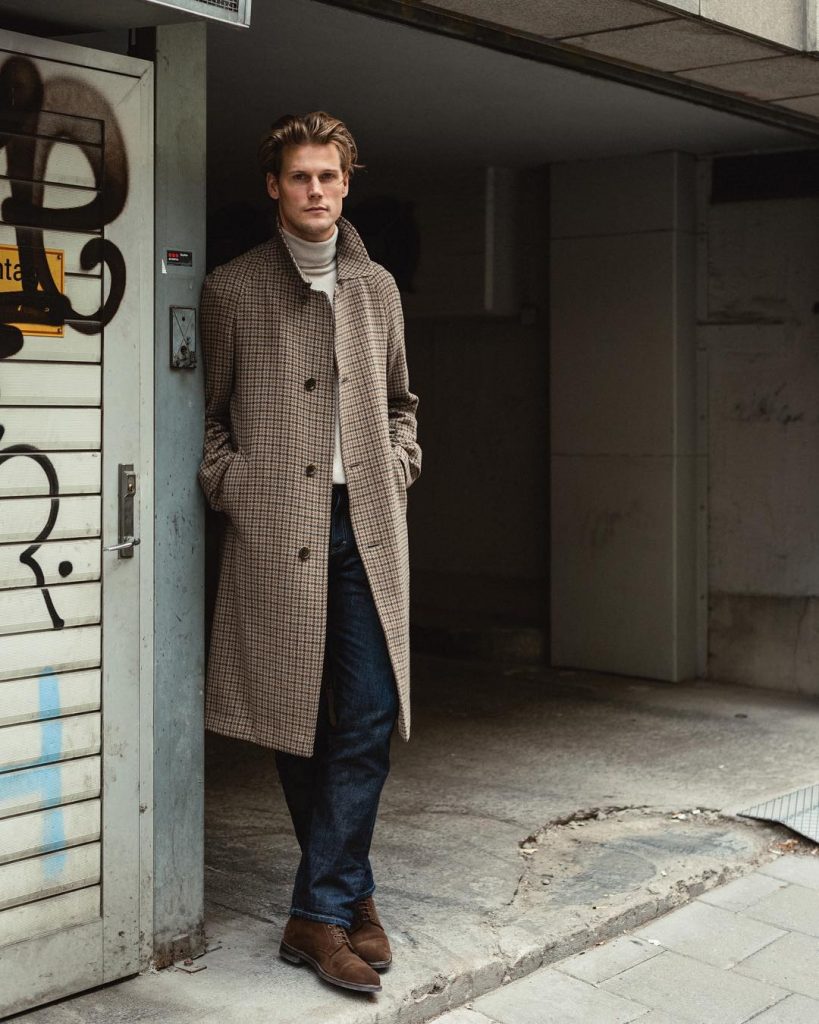
Like many people, I have too many shoes. Behind each of my closet doors, shoes are hanging from shoe organizers and piled on top of shoe racks. Over the years, some have proven to be useful, but many have proven to be expensive mistakes. I have two pairs of jodhpurs that I seldom wear. The second pair, inexplicably, were bought even though the first pair rarely saw the light of day (“maybe I just need them in a different color!” I told myself). I have too many redundant work boots and rain shoes. I also bought a pair of Purdey hunting boots once on eBay because they were cheap, only to discover why the previous owner was selling them. While interesting in terms of design, they take forever to put on, which means they never actually make it out.
With fall here, I thought I’d compile a list of shoes I have found to be useful — things that consistently get worn, even as my wardrobe has grown and evolved. I also surveyed some of my friends here at Put This On to see what they wear most this time of year. Some are the kind of basic shoes that can be worn with anything, while others are a little more directional. At the end of each category, I’ve listed some options across a range of price points. If you’re hunting for a new pair of shoes this fall/ winter, you may find something here.
Basic Lace-Up Boots
Versatility can be overrated if you already have a large wardrobe (no one needs 50 pairs of grey flannel trousers). But when you’re just starting out, building around versatility can be a way to develop a grab-and-go wardrobe that allows you to get dressed without going through all the permutations of what-goes-with-what. Good purchases should allow you to explore different aesthetics without requiring you to build a completely new wardrobe each time you change directions.
A basic pair of boots can be that kind of shoe. By basic I mean something with a plain or cap toe, no brogueing or unusual details, and an open-lacing system instead of a balmoral design (too dressy for most situations). Basic boots can be combined with everything from jeans to tailored trousers, milsurp jackets to certain sport coats. Olof Hörnesten, the handsome store manager behind Swedish shoe boutique Skoaktiebolaget, can be seen above wearing a suede pair with a topcoat, turtleneck, and some jeans. Nearly every wardrobe has a place for a simple pair of boots such as the ones he’s wearing. But since they’re basic by design, as your wardrobe develops, you may find yourself reaching for other options (hence why we have other styles on this list).
Options: Lof & Tung, Enzo Bonafe, Brooks Brothers, Carmina, Edward Green, Sid Mashburn, and Meermim
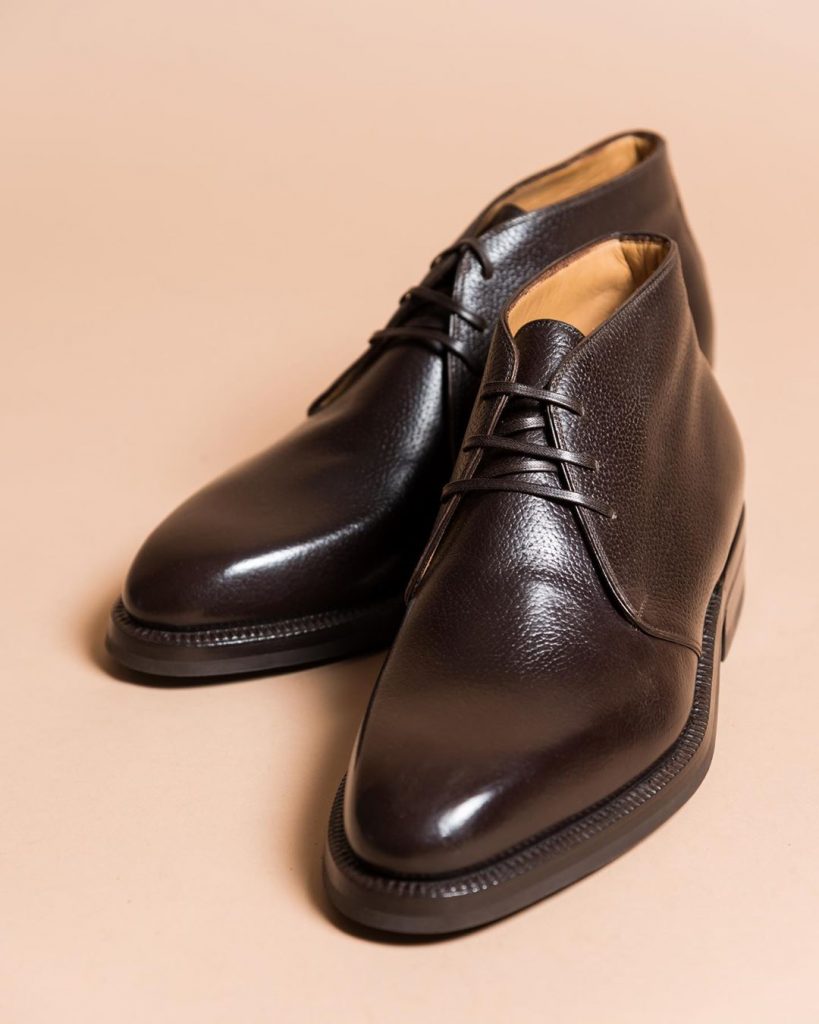
Textured Chukkas
Chukkas are a step up in formality. Like basic boots, they can be worn with almost anything — from Americana to workwear to tailoring. But they lean towards the dressier side of the spectrum and, depending on their design, can often feel more at home with sport coats and smart-casual than workwear. Michael Hill, the Creative Director at Drake’s, tells me that suede chukkas are his go-to travel shoes. “If I’m going away for a business trip, I’ll take my chukkas, and those will do me well across the board,” he says. “They’re a tremendously useful style. You can wear them with casual suits; you can wear them to dinner; you can wear them on weekends. There are very few situations where they don’t look right.”
Pete and I both prefer chukkas with studded Dainite soles. Leather soles can wear down quickly on wet concrete, but studded Dainite is suitable for almost any condition. They’re also a little more discrete than chunkier Commando soles, which makes them pair well with everything from denim to tailored trousers. I also think they look better in suede or pebble grain. Smooth calf in this design can make the vamp look a bit too plain, whereas suede and pebble grain lend just a bit of texture. If you get them in suede, treat them a coat or two of waterproofing spray — then you have yourself a pair of rain boots.
Options: Enzo Bonafe (pictured above), Lof & Tung, Alden, Carmina, Vass, Bow Tie, Drake’s, Loake, Crockett & Jones, Sanders, Meermin, and Charles Tyrwhitt
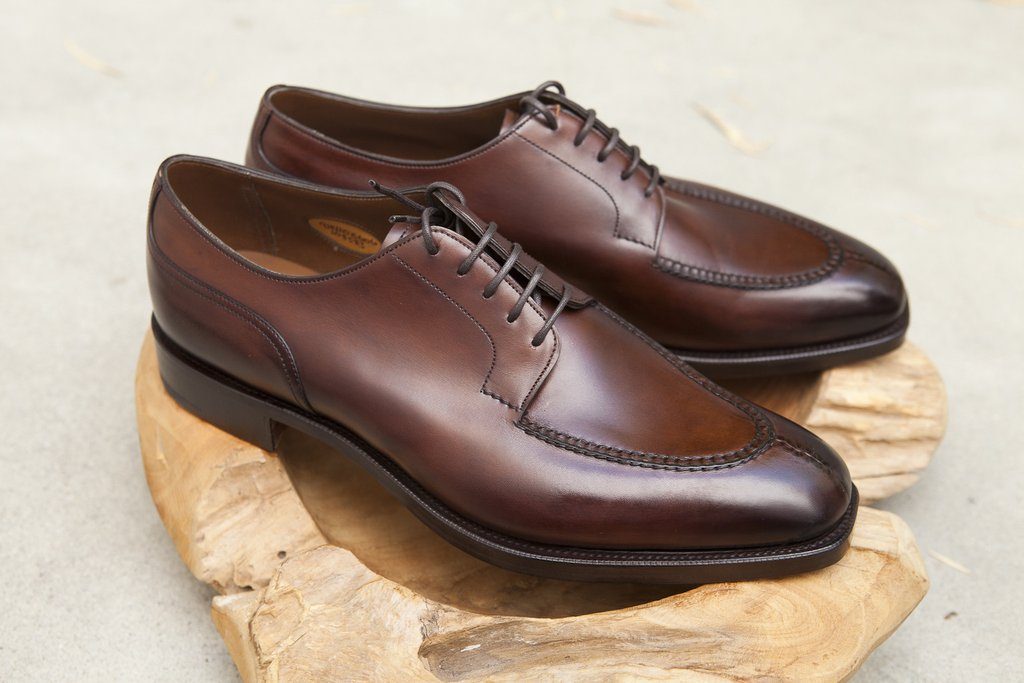
Norwegian Split Toes
Long-time readers know about my love for Norwegian split toes. It’s true they can look a bit taxidermic. And if done poorly, an elongated toe seam can even seem phallic. When everything comes together well, however, nothing looks as good to me. Wingtips are too common; cap toes too plain. Norwegian split toes plant your feet on the ground and say you like something a little different.
Apparently, the style has some workwear roots. John Lobb of St. James calls the style a Navvy cut for how they used to be worn by British navigational engineers (or navvies for short). Nicholas Templeman, who used to work as a lastmaker at the company, tells me men used to wear them when they worked on wet railways, canals, and roads.
Derbies are distinct from oxfords in that the tongue is an extension of the vamp. So any water that runs onto your shoes will roll down the vamp. With an oxford, the water can seep in-between the facings and leak into your shoes. I’m not sure how the split toe seam itself came into being. It may have been an adaptation from sportswear, like fell shoes or ski boots. Moving the seam to the toe means you get the extra layer of reinforcement from the toe puff, protecting you from water ingress, which otherwise may not happen at the seam’s traditional side positions.
I mostly wear them with tailored clothing — trousers in flannel, whipcord, and cavalry twill, dressier forms of chinos, and anything from sport coats to smart casualwear. Go for something a little chunkier and rounder if you want versatility. Sleeker and more refined split toes should be kept to tailored trousers, rather than jeans.
Options: Edward Green (pictured above), Heschung, Vass, The Armoury, Paraboot, Drake’s, Vass, Crockett & Jones, Carmina, Enzo Bonafe, Lof & Tung, and Meermin

Penny Loafers
Penny loafers may seem like an odd option for fall, but what could be better with tweed jackets, five-pocket cords, and Shetland sweaters? They were the choice of college students across the East Coast after 1930, later finding broader appeal through Esquire. More than being an Ivy shoe, however, penny loafers embody the kind of casual, dressed-down style that the US has always championed (much like button-down collars, in that sense). In fact, that’s what originally made them popular with students, who wanted something comfortable and smart, but sufficiently casual to avoid looking corporate.
You can wear penny loafers with anything classic: navy sport coats with chinos, casual suits, button-down collars with jeans, or even just shorts and a t-shirt. Depending on where you live, they can work three seasons out of the year. They’re dressy enough for the office; casual enough for weekends. They ride the line between oxfords and sneakers. The key is to pay attention to the shape. Sleeker loafers will sit better underneath tailored trousers and sport coats, whereas stouter, rounder loafer will be more versatile with casualwear. One of my favorite models for this time of year is Alden’s leisure handsewn in #8 shell cordovan, which has just enough visual heft to make them work well with autumnal clothing. The pair pictured above is from Maslow on Instagram.
Options: Alden, Carmina, Paraboot, JM Weston, Edward Green, Lof & Tung, Enzo Bonafe, Kleman, The Armoury, Crockett & Jones, Rancourt, Quoddy, Oak Street Bootmakers, Meermin, Grant Stone, Sid Mashburn, and Paul Evans
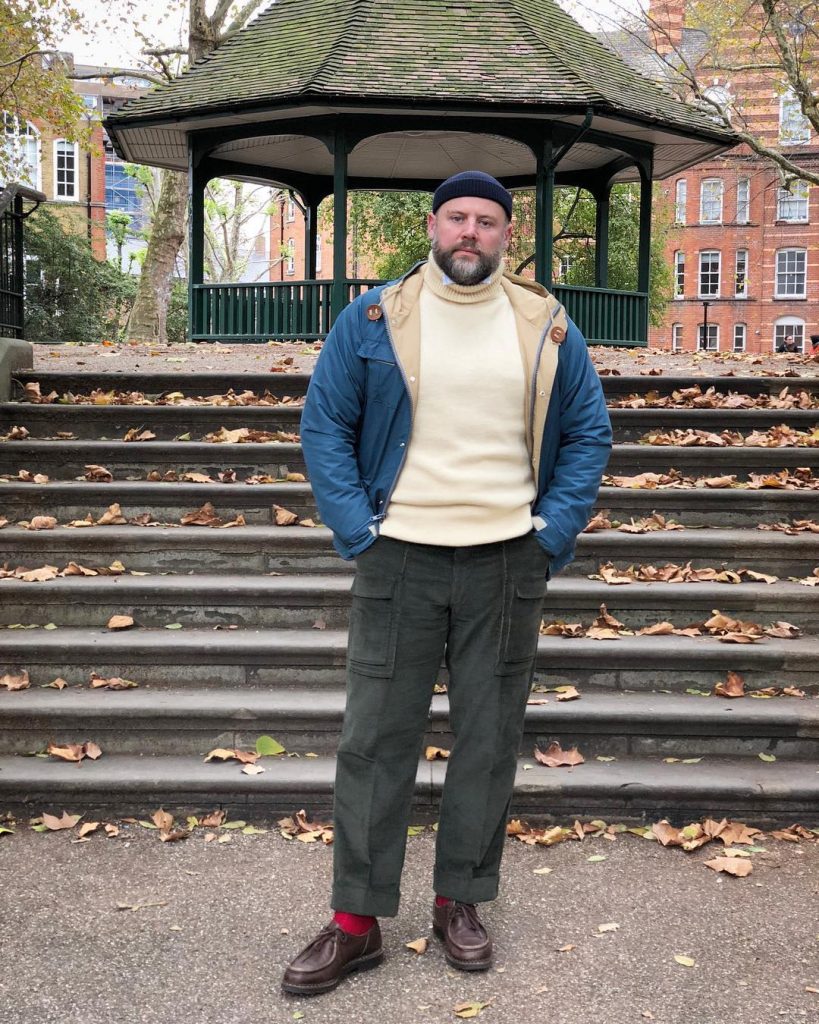
Tyrolean Shoes
Browse through tailored clothing forums, blogs, and Instagram accounts, and you’ll see a stream of the same kind of shoe: often oxfords, sometimes derbies, made on shapely lasts and decorated with fiddleback waists. Those shoes can be beautiful in the right contexts, but these are not that kind of shoe. They’re ugly. But I love them.
Tyrolean shoes were initially designed for tromping around Tyrol, a historical region of the Alps split between modern-day Austria and Italy. They’re mountain shoes — made for long walks with heavy Loden coats — but sometime in the 1950s, they gained broader appeal. The French apparently love them, as do the Japanese. The reason is simple: they’re comfortable and weatherproof. These are typically made with grippy soles, Norwegian welts, and heavy-duty leather uppers generously oiled with natural fats. That makes the leather a bit more water-resistant and pliable, perfect for the bellow tongues that are also designed to keep out water. The two-eyelet lacing system makes these an easy wet-weather shoe for when you don’t want to deal with boots.
Back when they were still publishing, the editors at Free & Easy used to include them in every issue. The funkier style went well with the kind of workwear-inspired clothes they liked to write about (see how Tony Sylvester above pairs them with a mountain parka and fatigues). With the right pair of slim pants and topcoat, they can also go with more casual forms of tailoring. These are a bit more directional than the other styles on this list, but if you find yourself gravitating towards brands such as Engineered Garments, they may be perfect for you. I think of them as for people who have a sense of humor about their style.
Options: Heschung, Paraboot, Ludwig Reiter, and Kleman
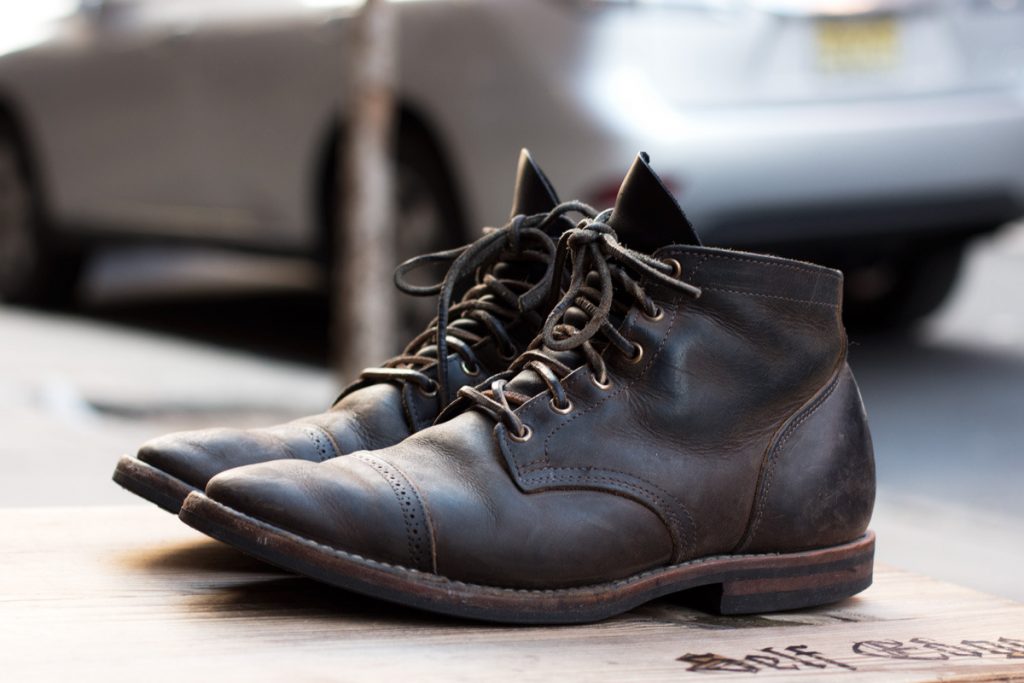
Service Boots
Service boots are to workwear what boat shoes are to prep. They’re a staple to the style and go with nearly everything. These boots have decades of military history. During the First World War, US soldiers wore simple boots made from calfskin that was backed with a featherweight lining. But when water started seeping into their shoes during the hard fights of trench warfare, the US Quarter Master General went back to the drawing board to make iterative improvements. Future military issued shoes saw thicker soles, sturdier uppers, triple stitching, and at times iron toe cleats. Out of those, we get the Russett Marching Shoe and Pershing Boot, which are two of the original WWI designs. Then the Type II and Type III service shoes, which saw combat in WWII.
Service boots have always been popular with repro-workwear and milsurp enthusiasts, but the style didn’t gain broad fashion appeal until Viberg came out with their version some years ago. Their service boots have a slightly sleeker, flatter toe box, which allows them to go well with anything from workwear to streetwear. They feel rugged without looking repro. Division Road in Seattle has one of the largest and most impressive selections of Viberg work boots. You can also find exclusive designs at shops such as 3sixteen, Standard & Strange, and Rivet & Hide. For something a little more affordable, try Truman. They’re a touch chunkier looking, which I find skews them that much more towards workwear, but they’re just as well made as top-end versions.
Like a lot of workwear, service boots have that better-with-age quality we love, and they require very little upkeep. There’s no need to condition or polish the shoes. The more beat up they look, the better. The pair above is from Andrew Chen, co-founder of 3sixteen, who wore those specific boots for about eighteen months. Andrew tells me he did little to take care of his shoes except wipe them down with a damp cloth every once in a while. Truthfully, they don’t seem like they were even wiped down that often, and that’s probably why they look so great. These boots can really make an outfit.
Options: Viberg, Truman, Taylor Stitch, White’s, Wesco, Grant Stone, and Oak Street Bootmakers
,
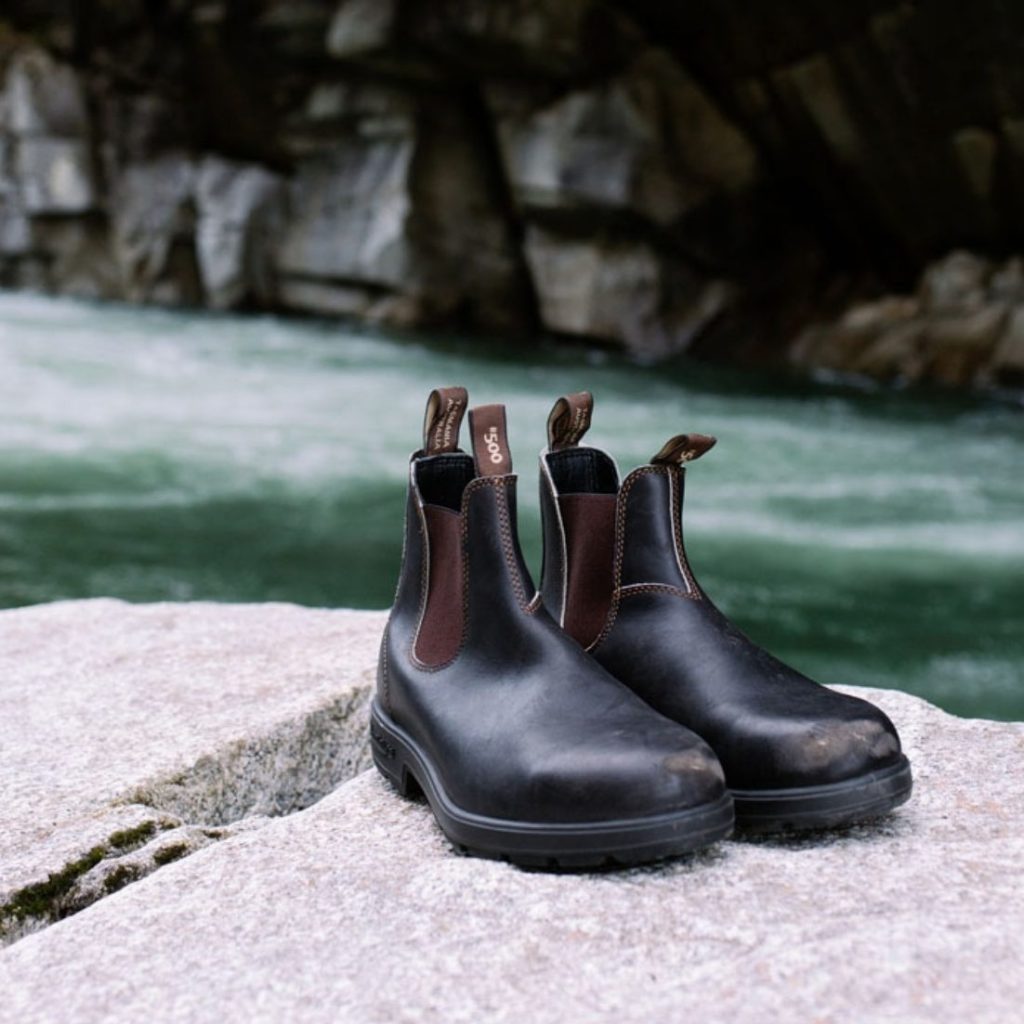
Chelsea Boots
For as long as I’ve been interested in shoes, I’ve always favored boots, and one of the first kinds of boots I fell in love with was Chelseas. Chelseas are a kind of ankle-length, pull-on boot with elastic side gussets. First made in the mid-19th century as an alternative to button-boots, they became popular in the 1960s when they were picked up by young men in the Chelsea district of London (hence their name). The Beatles also famously wore a version with an elevated Cuban heel, which gave the style some rock ‘n roll verve.
My first Chelseas were RM Williams’ Gardener. Rounded and clunky, I found them too casual for my wardrobe, so they were replaced a few years later with Edward Green’s Newmarkets. Since then, I’ve learned Chelseas can be worn with almost anything. Black ones go with slim, charcoal suits for a Modish look, or black jeans and black leather jackets for something edgier. Brown suede Chelseas go well with denim and olive field jackets, or just jeans and chambray shirts.
In the Bay Area, you often see Blundstones on stylish women. They wear them with things such wide-legged jeans, oversized Shaker sweaters, charming and sometimes even homely looking workwear, and loosely cut coats. Our illustrator Richard says he’s a fan. “I typically wear penny loafers as long into the winter as possible, but once the snow settles on New York, it tends to stick around. For that kind of weather, I pull out my old Blundstone 500s (or ‘Blunnys’),” he says. “They are the classic work shoe back home, worn by tradesmen and chefs and art school kids. They are super sturdy and handle the snow easily.” Looking back, I wish I hadn’t sold those RM William Gardener. Sometimes a chunkier silhouette looks better with certain outfits.
Options: Blundstones (pictured above), RM Williams, Edward Green, Carmina, Meermin, Lof & Tung, and Sanders

Camp Mocs
In the last 100 years or so, Americans have invented some of the most classic slip-on shoe styles for men, but they usually start with an idea borrowed from somewhere else. G.H. Bass, for example, invented the classic American penny loafer, but they came up with the idea after having seen moccasin-style shoes made and worn by farmers in Norway. Alden, similarly, came up with the tassel loafer when actor Paul Lukas asked if they could make something similar to a pair of tasselled oxfords he picked up in Europe.
Yet another example is the camp moc, which was invented by LL Bean’s founder, Leon Leonwood Bean, in 1936. He came up with a slip-on shoe that could be worn out in the wilderness by taking some ideas from Native American moccasins. Like many of his company’s clothes in the mid-century, LL Bean’s camp mocs eventually made their way to college campuses. At that time, many students liked to repurpose outdoor clothes such as mountain parkas, Champion sweatshirts, and camp mocs for everyday use.
Camp mocs and their various iterations (such as the trail moc, which is a slip-on with a bit more lacing) go great with American prep and workwear. They’re natural accompaniments with denim, waxed cotton, and Shetland sweaters. Wear them with Barbour jackets and jeans; chinos and madras shirts; chambrays and reworked Japanese field jackets. They’re a great choice if your style can in any way be described as “New Englander.” They also work well with summer workwear and certain streetwear-inspired styles. Even Noah has made a version.
Options: Alden (pictured above), Rancourt, Oak Street Bootmakers, Quoddy, LL Bean, Russell Moccasin, and Sid Mashburn
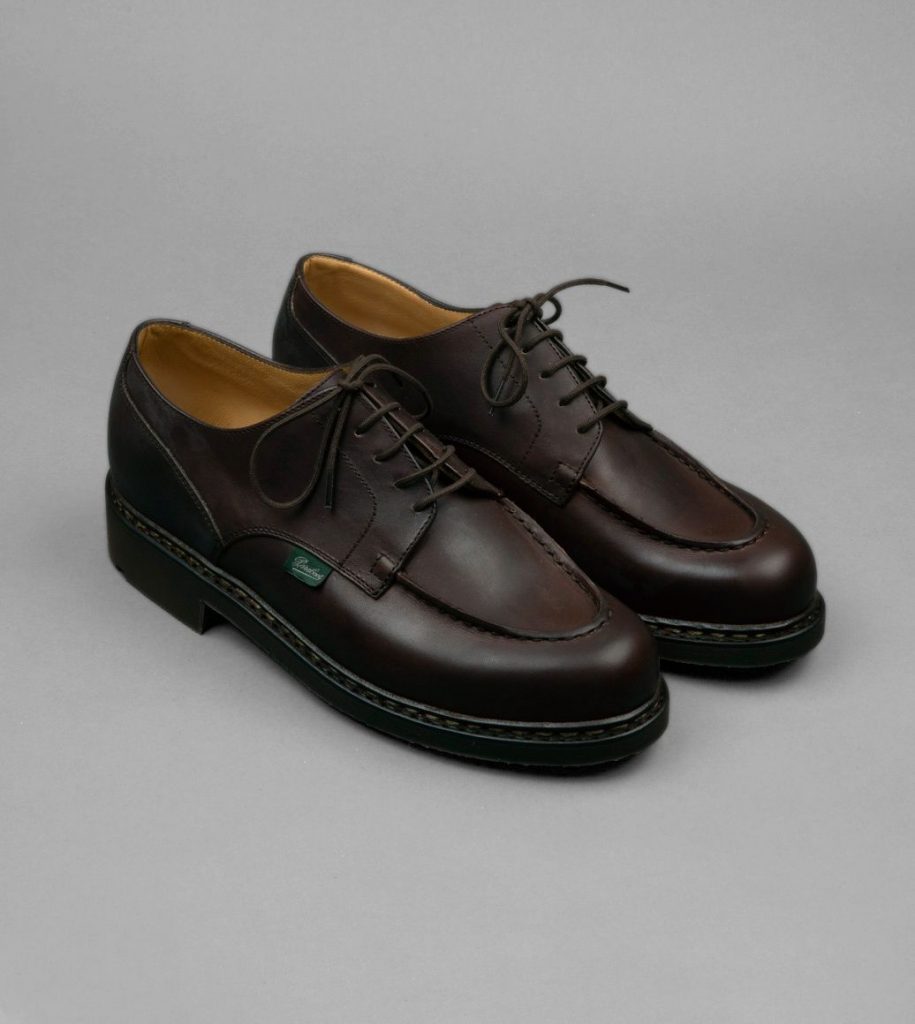
Simple Derbies
Finally, there’s something to be said about a simple pair of derbies. Over the years, I find myself reaching more for unique designs — split toes, side zips, and even tassel loafers (especially in black calf lately). But much like a pair of basic boots, a simple pair of derbies can be worn with nearly anything. There’s almost always a spot for them in a wardrobe, which again allows you to build in that versatility that makes developing a personal sense of style that much easier.
Alden’s are perhaps the easiest to wear across a range of wardrobe, but if you’re looking for something more distinctively autumnal, Lof & Tung’s heavier profile and Dainite soles may go better with waxed cotton Barbours and heavy knitwear. Most of all, I’ve been eyeing these Paraboots you see above. The style would pair well with anything on the classic side of casual — Rugged Ivy, workwear, and Americana. They’re a bit goofy looking, but in a good way, and are a little more low-key than Tyroleans. That chunky Norwegian welt closes the gap between the uppers and sole, which makes these well- suited to the rain. Our illustrator Ryan is a fan.
Options: Paraboot (pictured above), Alden, Russell Moccasin, Crockett & Jones, Carmina, Lof & Tung, Meermin, and Sid Mashburn







